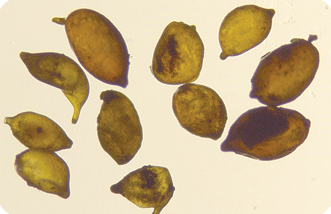Prevention
■ Use an integrated system to prevent or delay the introduction of SBCN into areas where it has not been reported. This will include avoidance of, or limited use of, host crops in the rotation; good control of weed hosts; avoiding use of machinery and equipment from areas with known SBCN problems; and thoroughly washing used machinery and equipment if coming from areas with SBCN problems. Use proper sanitation/sterilization measures after visiting areas with known SBCN problems and then visiting fields which do not have this pest.
In areas where SBCN was reported, its population should be reduced below the economic threshold level by following different management methods.
■ Plant SBCN tolerant cultivars which are available, but be aware of their susceptibility to other diseases, including Cercospora and Rhizoctonia root rot.
■ Rotation with non-host crops, including wheat, barley, corn, bean, potato and alfalfa. Three- to four-year rotation is needed in heavily infested fields; rotations with non-host may reduce initial SBCN population by 40-60 percent in a year.
■ Plant trap crops which attract SBCN, but do not allow them to develop and reproduce. Some SBCN-tolerant cultivars of oil seed radish (Defender, Image and Colonel) and white mustard are effective.
■ Early planting when soil temperatures are not favorable
(< 59 degrees F) for infection by SBCN.
■ Control weeds that are hosts for SBCN in sugarbeet and
rotation crops.
■ Avoid returning tare soil with SBCN to fields in which sugarbeet is grown.
■ Some nematicides may be effective, but are typically difficult to apply and may be uneconomical. Biological seed treatment which utilize spores of Pasteuria nishizawae may help to manage SBCN on tolerant sugarbeet varieties.





